|
Farrand
Optical Company in World War Two
New York, NY
1941- 1991
1991- Current as part of Ruhle Industries
This page added 4-26-2022.
Clair Loring Farrand
(1895-1981) was the inventor of the cone loudspeaker and holder of more
than 250 patents. Mr. Farrand is one of the most unknown
inventors of a commonly used and ubiquitous product. His
invention of the loudspeaker is one of them. The paper cone with
an electromagnet loudspeaker he invented has been used in just about
every device that needs to project sound since it was invented.
Before his invention, listeners to the early radio programs or
phonographs had to use headphones or horn type speakers. Mr. Farrand increased the fidelity of the sound output with his new cone
speaker. It has been the type of speaker used in radios, televisions,
stereo systems, boom boxes, computer speakers, and a plethora of other
devices that need to transmit audio information. It is truly
ubiquitous and used on a daily basis by anyone who listens electronic
devices.
Below
are the first three pages from his cone loudspeaker patent.
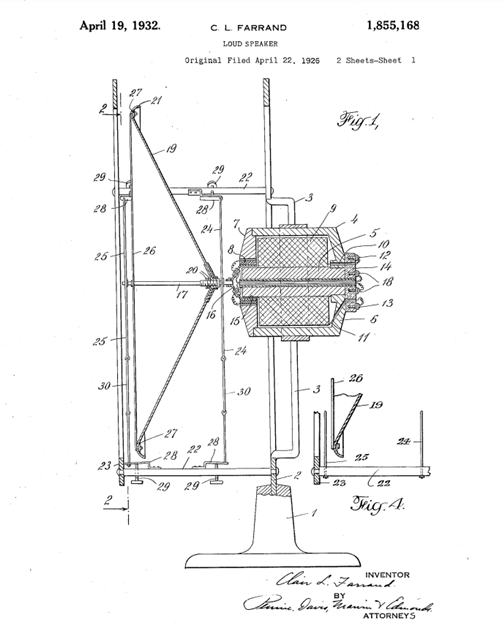
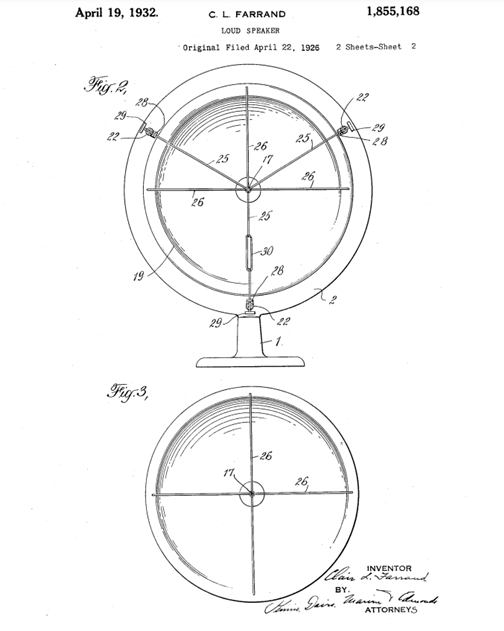
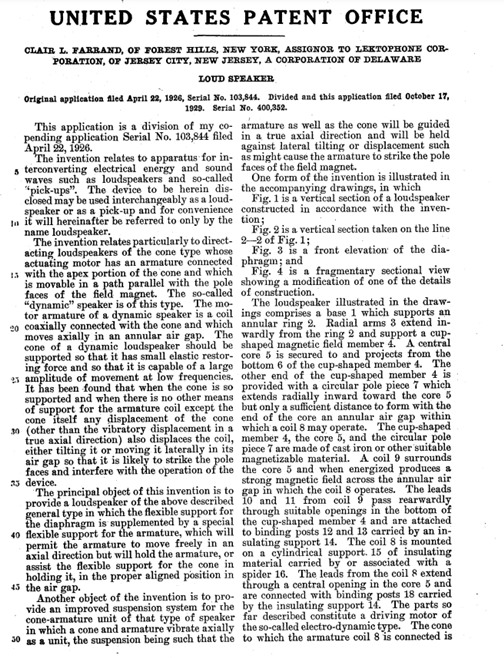
A pioneer in the radio industry, Mr. Farrand was a wireless operator in
a Marconi station at Wanamaker's department store in Philadelphia and
was one of two radio operators that received the distress messages from
the Titanic. He left the Marconi Corporation in 1918 to perfect
his cone loudspeaker. It did away with the general use of earphones and
replaced the horn type of speaker, which was made of rigid material and
thus unable to adequately produce
the vibrations, and thus higher fidelity, of Farrand's paper cone
speaker.
Mr. Farrand established the Farrand Optical Company in
1941, bought a factory building in the Bronx, and made optics for the U.S. Army
and Navy during World War World War Two. The firm moved to Mount Vernon, New York,
in the mid-1960s. After World War Two he
was the founder and president of Farrand Industries Inc. of Valhalla,
N.Y. Today both Farrand Optical Company and Farrand Industries are
part of Ruhle Companies, Inc.
Farrand Optical Company World War Two Products:
The company had
$13,136,000 in major contracts issued by the U.S. Navy and
U.S. Army. Of the eleven contracts issued to the company, nine
were from the Navy. However, the Army had the largest dollar
contract for $9,468,000 which was 72% of the total dollar value the
contracts.
Table 1 - Farrand Optical Company's
Major World War Two Contracts
The information below
comes from the "Alphabetical Listing of Major War Supply
Contracts, June 1940 through September 1945." This was
published by the Civilian Production Administration, Industrial
Statistics Division. |
|
Product - Customer |
Contract Amount |
Contract Awarded
Date |
Completion
Date |
| Optical
Instruments - Navy |
$1,144,000 |
6-1941 |
8-1943 |
| Optical
Equipment - Navy |
$125,000 |
11-1941 |
11-1942 |
| Optical
Equipment - Navy |
$198,000 |
1-1942 |
3-1943 |
| Boressight
Telescopes - Navy |
$380,000 |
6-1942 |
6-1944 |
| Telescopes -
Navy |
$833,000 |
11-1942 |
2-1942 |
| Research
Services - Navy |
$116,000 |
7-1943 |
6-1945 |
| Research
Services - Navy |
$106,000 |
12-1943 |
11-1944 |
| Periscopic
Sights - Army |
$9,468,000 |
1-1944 |
4-1946 |
| Fire Control
Equip - Navy |
$212,000 |
10-1944 |
12-1946 |
| Aviation
Trainers - Navy |
$195,000 |
1-1945 |
10-1945 |
| Engineering
Services - Army |
$409,000 |
4-1945 |
5-1946 |
| Total |
$13,136,000 |
|
|
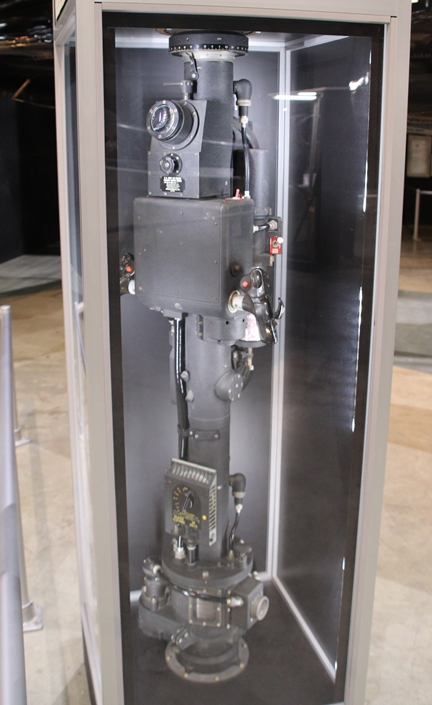
The $9,468,000 Army contract was for the
Mark 33 gunsight that was used in the Douglas A-26. This
example is on display at the National Museum of the United States
Air Force in Riverside, OH. Author's photo.
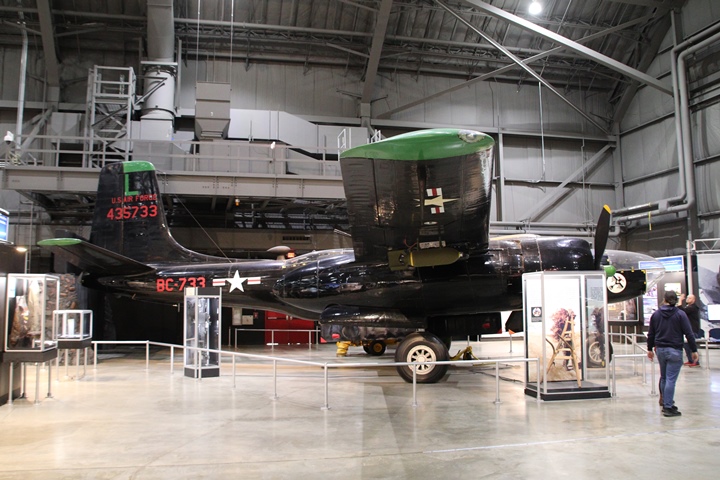
The Mark 33 is on display at the museum in
the tall glass cabinet under the red BD-733 numbers located at the tail
of the A-26. During World War Two, the Douglas Aircraft
Company produced 2,449 A-26s to help win World War Two. Many of
them had Farrand Optical Company-built Mark 33 gunsights in them.
According to the data plate on the Mark 33 at the museum, General
Electric appears to have done the original design work.
General Electric also built the Mark 33s, as one of them was sold on an
online auction. Farrand Optical Company was allowed to build the
units under license so General Electric could use the factory space for
other war related products. Author's photo.
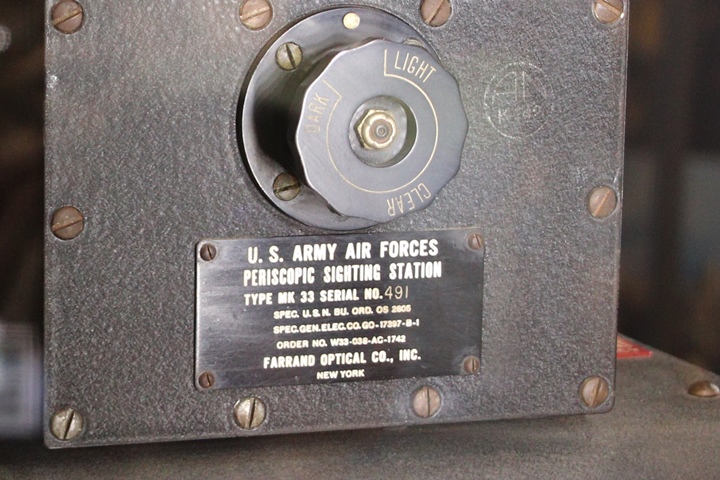
The data plate indicates that this
particular unit is serial number 491. It also refers to a General
Electric specification. Author's photo.
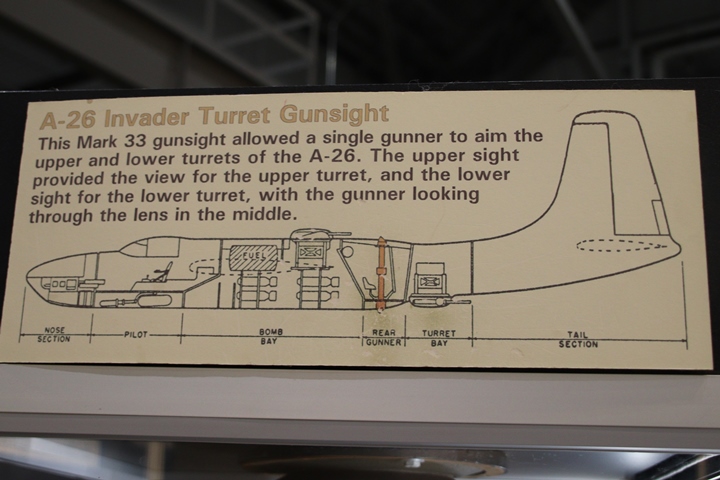
This illustration at the display shows how the Mark 33 allowed the rear
gunner to control both the upper and lower turrets with one gunsight.
The gunners had issues
with vertigo in using this gunsight when switching between the two
turrets. The gunners were located in a enclosed space in the rear
of the aircraft that didn't allow for many outside references when using
the gunsight. Author's photo.
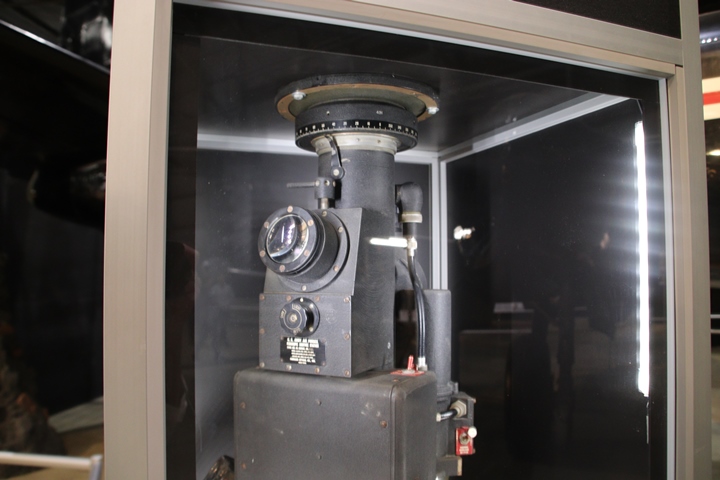
Author's photo.
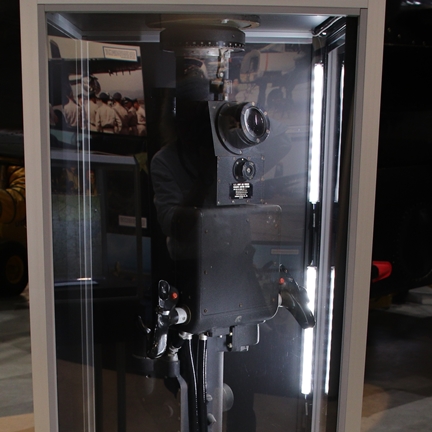
Author's photo.
|








